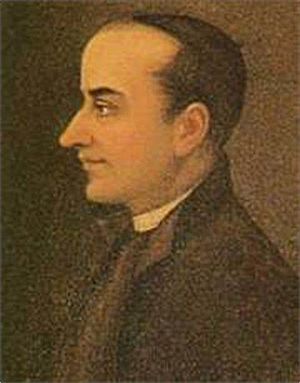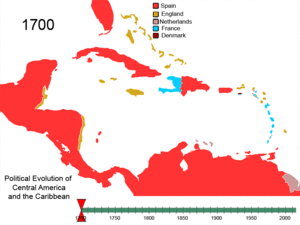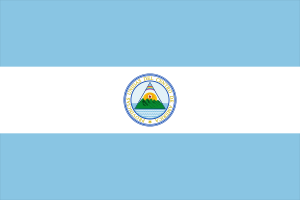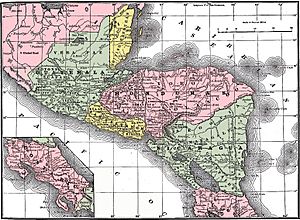History of Central America facts for kids
Central America is a region that connects North and South America. It includes seven countries: Guatemala, Belize, El Salvador, Honduras, Nicaragua, Costa Rica, and Panama. Geographically, Central America starts in Mexico at the Isthmus of Tehuantepec, which is the narrowest part of Mexico.
For a long time, these countries were quite isolated from each other because there weren't many roads connecting them. Even today, there isn't much travel between them by train. During the time when Spain ruled the region, Guatemala was the main administrative and religious center.
The countries in Central America are quite diverse. For example, Guatemala has a large population of Native Americans, while Costa Rica does not. Some countries, like El Salvador, focus more on their Pacific coast, while others, like Belize and Honduras, have more important Caribbean or Atlantic coasts. Panama, and to some extent Guatemala and Costa Rica, have important coasts on both sides.
Some countries, like Costa Rica, have very stable governments. Others, like Nicaragua and El Salvador, have faced more challenges. Panama is very connected to the United States. It uses the US dollar as its money and has the important Panama Canal, which brings a lot of income and visitors from all over the world.
Contents
Ancient Civilizations in Central America
Before Europeans arrived, the northern parts of Central America were home to amazing ancient civilizations. The most famous were the Maya peoples, who built many large cities across the region. The Aztecs also had a huge empire that reached into parts of Central America.
In the eastern parts of El Salvador, Honduras, Nicaragua, Costa Rica, and Panama, people spoke Chibchan languages. These groups were culturally different from the Maya and Aztecs and are sometimes called the Isthmo-Colombian Area cultures.
Spanish Rule in Central America
After the Spanish arrived in the 1500s, most of Central America shared a similar history under Spanish rule. However, the Caribbean coast was different. This area had independent Native American groups, communities of escaped slaves, and British settlers. These British settlers eventually formed British Honduras, which is now the country of Belize.
Spain and Britain had agreements about British Honduras, but Britain continued to settle there. When Guatemala became independent from Spain, it claimed British Honduras as its own. However, British Honduras became independent from Great Britain in 1981 and changed its name to Belize. Guatemala still believes that part of Belize belongs to it.
From the 1500s until 1821, most of Central America was part of the Captaincy General of Guatemala, also known as the Kingdom of Guatemala. This area included parts of what is now Mexico, plus Guatemala, El Salvador, Honduras, Nicaragua, and Costa Rica. It was officially part of New Spain (Mexico), but it was mostly run by its own leader, the Captain General, who lived in Guatemala City.
Central America Gains Independence
In the early 1800s, people in Central America started movements to gain independence from Spain. The first big revolts happened in El Salvador in 1811 and 1814, but they were stopped.
Finally, on September 15, 1821, leaders in Guatemala City declared the region's independence from Spain. This date is still celebrated as Independence Day in most Central American countries. The Spanish leader at the time, Gabino Gaínza, agreed to stay on as a temporary leader.
However, this independence didn't last long. Some conservative leaders in Guatemala decided to join the First Mexican Empire in 1822. Many liberals in Central America didn't like this, but a Mexican army came and took control.

When Mexico became a republic in 1823, it allowed Central America to decide its own future. So, on July 1, 1823, Central America declared its "Absolute Declaration" of independence. This meant they were completely independent from Spain, Mexico, and any other foreign country. They decided to form a republic.
Even though they wanted to be united, it was hard because different regions had strong disagreements. Cities within each country often had conflicts, and there were also fights between those who wanted a republic and those who wanted a monarchy (a king or queen). These disagreements led to the creation of the separate countries we know today.
The Federal Republic of Central America
In 1823, the countries formed the Federal Republic of Central America. It was meant to be like the United States, with different states working together. It included Guatemala, El Salvador, Honduras, Nicaragua, and Costa Rica. Later, a sixth state called Los Altos was added, but it was soon re-joined with Guatemala and Mexico.
The leaders who wanted this federation hoped it would become a modern, democratic nation. They believed it would become rich from trade between the Atlantic and Pacific oceans. The flag of the republic showed these hopes: a white band between two blue stripes, representing the land between the two oceans. The coat of arms had five mountains (one for each state) between two oceans.
However, the Union broke apart in a civil war between 1838 and 1840. Nicaragua was the first to leave in 1838. The idea behind the Federal Republic was to make the small regions stronger together. But strong political disagreements between the states led to its end. This caused many political and economic problems that are still felt today.
The region had been part of Mexico for a short time, but many people wanted full independence. When the Mexican Empire faced problems, Central America finally gained its full independence on July 1, 1823.
After independence, leaders from the different regions decided to unite into a federation of five self-governing states. This created the United Provinces of Central America (UPCA).
The UPCA wanted a liberal government, similar to the United States. They believed the "provinces alone were too small and weak economically to survive as sovereign states." However, there were many different political ideas, and conservative groups often disagreed with the new liberal government.
One important leader of the UPCA was Francisco Morazan. He was a liberal who became president of the UPCA. In the 1820s and 1830s, Morazan fought for liberal ideas, especially in Guatemala, Nicaragua, and Honduras, against conservative groups. These battles caused deep divisions. Liberals wanted free trade and a republic, and they didn't want the church to have too much power. Conservatives wanted more control over trade and more power for the church.
These conflicts, along with diseases like cholera and outside interference, led to many civil wars. Morazan was captured and killed in Costa Rica in 1842. His death marked the official end of the UPCA. The conflicts between liberals and conservatives that Morazan fought for are still seen in Central America today.
Without a strong central government, the different nations had more disputes. Nicaragua, Honduras, and Costa Rica left the union in 1838. Guatemala left in 1839, and El Salvador in 1840.
The provinces then became their own separate republican nations. Later, Panama and Belize also became part of what we call Central America. Even though uniting would have been better for the region, they remained separate. Many attempts to reunite the nations have failed over the years. Civil wars continued in Central America through the 20th and into the 21st century.
Later Attempts to Reunite Central America
Several attempts were made to reunite Central America in the 1800s, but none lasted long. In 1842, former President Francisco Morazán tried to bring the countries back together, but he was quickly captured and killed.
Another attempt happened in 1852, when El Salvador, Honduras, and Nicaragua formed a Federation of Central America. In the 1880s, Guatemalan President Justo Rufino Barrios also tried to reunite the region by force, but he was killed.
A third union of Honduras, Nicaragua, and El Salvador, called the Greater Republic of Central America, lasted from 1896 to 1898. The last attempt was from 1921 to 1922, when El Salvador, Guatemala, Honduras, and Costa Rica formed a second Federation of Central America. But this federation also quickly failed.
Even though a lasting political union hasn't happened, the idea of Central American reunification still comes up. In 1856–1857, the countries worked together to fight off an invasion by an American adventurer named William Walker.
Today, all five original nations (Guatemala, El Salvador, Honduras, Nicaragua, and Costa Rica) have flags that look similar to the old federal flag. They have two outer blue bands and an inner white stripe. Costa Rica changed its flag in 1848 by making the blue darker and adding a wide red band in the middle, inspired by the French flag.
Changes in the Late 1800s and Early 1900s
Around 1870 to 1930, Central American leaders made big changes to farming and trade. They also changed how the government, society, and economy worked together. Important leaders during this time included presidents Justo Rufino Barrios in Guatemala and José Santos Zelaya in Nicaragua.
A key change during this period was that land that used to be owned by communities became private property. This meant that individuals or companies owned the land. The way this happened and how much land became private varied in each country.
Central America in the 20th Century
In 1907, a Central American Court of Justice was created to help solve problems between countries. On December 13, 1960, Guatemala, El Salvador, Honduras, and Nicaragua formed the Central American Common Market (CACM). Costa Rica chose not to join. The goal of the CACM was to bring the countries closer together and help their economies grow by making more goods themselves. It was an economic success at first, but it stopped working after the "Football War" between El Salvador and Honduras in 1969.
By the 1930s, a powerful American company called the United Fruit Company owned a huge amount of land in Central America. This gave the company a lot of power over the governments of these small countries. This situation led to the term "Banana republic" being used to describe countries where foreign companies have too much influence.
Since 1991, a Central American Parliament has been working as an advisory group. It has representatives from Nicaragua, Guatemala, El Salvador, Honduras, Panama, and the Dominican Republic.
Another important step is the Free Movement of people in the CA-4 initiative, which started in 2007. This allows people to cross borders between Nicaragua, Guatemala, El Salvador, and Honduras using just a national ID card, without needing a passport. This makes travel and trade easier between these countries.
History of Central American Nations
- History of Belize
- History of Costa Rica
- History of Guatemala
- History of El Salvador
- History of Honduras
- History of Nicaragua
- History of Panama
Images for kids
-
A map of Central America until 1860, showing the Kingdom of Mosquitia.
See also
 In Spanish: Historia de América Central para niños
In Spanish: Historia de América Central para niños






